Creating Atmosphere with Ambient Lighting
Ambient lighting impacts our mood
Light has a direct psychological effect on us. Different color temperatures and levels of brightness have an impact on how we perceive things. Warm candlelight makes a room appear cozy. Harsh LED light can make the same room look like an office environment or a sterile industrial space. For tabletop RPGs, using different kinds of lighting is a very easy but powerful technique to evoke a certain mood. This can be a red light for a scene set in a submarine or flickering candle light for exploring a subterranean dungeon. Let’s take a look at how to use lighting to create a certain mood in a tabletop RPG session and what equipment is needed for this.
Impact: ★ ★ ☆ ☆
Difficulty: Intermediate
Time to read: 12 min
How light temperature affects us
Light can either feel warm or cold. Warm light has a more yellow or brown hue. It feels more comfortable to our eyes and makes a room seem cozier. Cold light appears brighter and has a bit of a blue tone. It’s more stimulating than warm light and makes the room look like a work or study environment.
Cold light tones are often used in office environments to help people stay focused. Their agitating effect also strains our eyes. The same is true for light coming from smartphones and PC monitors. That’s why it’s not recommended to work on these devices shortly before going to bed. The stimulating effect of cold light can make it harder for you to fall asleep.
For gaming scenarios, using warm light is preferable. It appears more natural to our eyes and adds a comforting touch to the atmosphere of the game. When buying lights, always pay attention to the color temperature, which is shown on the packaging. Try buying lights with a 2400 or 2700K color temperature. Here is an image from Wikipedia showing the different color temperature values and what the corresponding light looks like. For more details, see this Wikipedia article.

For which settings does ambient lighting work well?
Ambient lighting effects mainly work for fantasy and horror settings. In these games, there are scenes like exploring dark caves, doing research in cities without electrical light, or keeping watch at the group’s camp in a dark forest. Turning down the light also works for heist scenarios, in which the player characters carry out criminal activities during the night (e.g. Cyberpunk games, Blades in the Dark, etc.). Whenever the players need to explore dark, abandoned places, dimming the light is great for getting them in the right mood.
For more light-hearted games, ambient lighting does not play a big role. This also goes for a lot of settings that include topics like superheroes, romance, humor, or satire.

Useful ambient lighting gear for GMs
Here’s a list of different tools and equipment for ambient lighting, including tips on how to combine them.
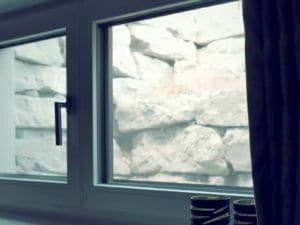
1. Window light
This will probably be available in any room. This light varies with the time of the day, but can be controlled using opaque curtains, shutters, or blinds. You don’t want the room to be too bright for your dungeon or horror scenarios. Pack some large curtains if you want to cover windows during a convention. You can never tell if they have proper curtains there.
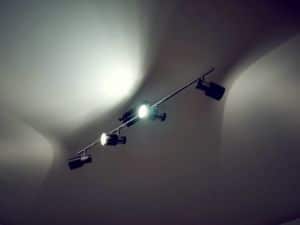
2. Ceiling light / Wall lights
These are also standard in any room. It’s even better if they are dimmable. Usually they aren’t though, so using a complementary light source like a lamp to adjust the brightness in the room is advised. If you have your own gaming room, make sure to install dimmable lights with a warm light temperature (2400 to 2700 K). Lights that are too cold (over 2700 K) make the room feel like an office environment.
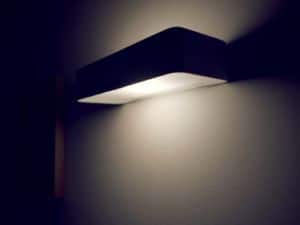
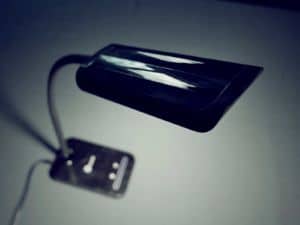
3. Portable lamps
These are a great addition to the main ceiling light. They are also an invaluable tool when GMing at conventions, because you never know what the on-site lighting situation will look like. A dimmable light is a must. Colored light is a nice-to-have feature. Modern LED lamps come with a battery, which means you don’t need to have a power outlet nearby. Price is approx. $30.
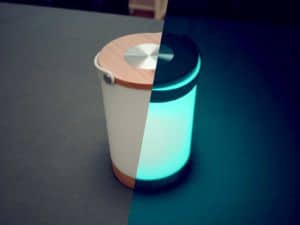
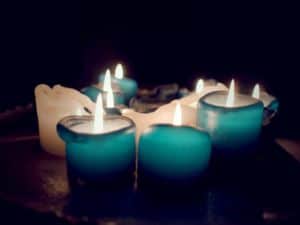
4. Candles and lanterns
In today’s world full of artificial light sources, lighting a candle has become something special. They create a unique and cozy atmosphere with their warm glow. These are perfect for any medieval fantasy setting. No dungeon should be crawled without the comforting light of a candle.
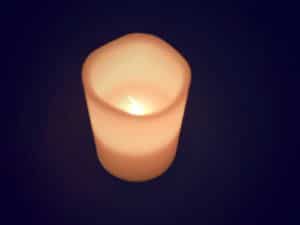
5. LED candles
In some buildings or at conventions, candles are often prohibited due to the risk of fire. LED candles can be a useful alternative for these situations. The light they emit lacks the soft, warm glow of real candles. And even though they are available with a flickering light feature, they still look artificial. Probably better than having no candles at all.
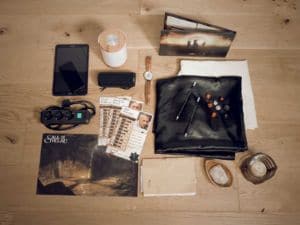
6. Further reading
For more tips on GMing at conventions, for example, what equipment to bring,
check out our article “GMing at conventions.”
For more tips on how to use smart lights, see this article from Geek & Sundry:
https://geekandsundry.com/gms-set-the-mood-for-your-rpg-sessions-with-smart-lights/
check out our article “GMing at conventions.”
For more tips on how to use smart lights, see this article from Geek & Sundry:
https://geekandsundry.com/gms-set-the-mood-for-your-rpg-sessions-with-smart-lights/

How to switch between light sources
Using atmospheric lighting is a great thing. But after 15 minutes, the effect wears off because our brain starts to filter out this visual stimulus. This means the biggest impact on the mood of your game session takes place when adjusting the lighting. Making the room brighter or darker signals to your players that something important is about to happen in the story. This will increase their attention for several minutes. Follow these guidelines to make the most out of this moment:
1. Make a smooth transition
Try to maintain your players’ immersion when switching the lights on/off. Don’t fumble around too long with your technical equipment. Try not to draw your players’ attention to your lighting gear. Calmly stand up, go to the light switch or lamp, activate it, then sit down again. Otherwise, you might interrupt the game’s flow. As long as it does not take more than 20 seconds, you’re fine.
2. Emphasize the change of light in the story
When switching the ambient lighting, narrate what happens in the story. While you turn off the ceiling light and light a pair of candles, tell them how darkness encircles their characters while entering a dark forest or climbing down a bottomless pit. Link the out-of-game visual cue of changing the lighting with what’s happening in-game. This makes for a very atmospheric scene.
Dice and character sheets need to stay visible
Whenever you use ambient lighting and lighting effects, make sure that you can still read the dice rolls and character sheets. If your players are having a hard time deciphering the numbers on their dice, that will kill the atmosphere that you have built up. They will start fumbling around with their smartphone flashlights, and this can be really detrimental to their immersion.
Yes, there are special occasions where you want the players to be in total darkness or in a dim light for a few moments. That’s totally fine. But for the most part, being able to read what’s on the table is a must. Try keeping the light intensity at a decent level – not too dark and not too much of a distraction.


Ten Candles is an award-winning indie-RPG that uses lighting in its game mechanics. The namesake ten candles are the only light source in the room. Whenever the players fail at a task, one candle is extinguished. It is a brilliant game about tragic horror. Check it out here: https://cavalrygames.com/ten-candles
Special light effects: Strobe, spotlight, snap-light sticks
Aside from traditional ambient lighting, there are also special light effects you can use. A strobe light for a scene at a rave event, flashlights during a power outage, or snap-light sticks to resemble emergency lights on an abandoned space station are some cool examples we’ve seen so far. They help the players immerse themselves in the setting.
Just make sure they are easy to handle in order to not break immersion or disturb the flow of the story. Nobody wants to see the GM fumbling around with their tech setup for more than a few seconds. That’s why we recommend testing special light effects before the game. Make sure that the dice and character sheets are still visible (or not necessary) during these scenes. Also, pay close attention to how your players react. A lot of people feel uncomfortable when exposed to very bright light or a strobe light. If unsure, check in with them to see if they are okay. Make sure the little bit of extra atmosphere from your lighting effects does not ruin the whole experience for them.

Colored lights – are they worth it?
Red lighting when the group is aboard a submarine. Blue lights when the players explore a sunken temple at the bottom of a lake. Green lights when cutting a path through the dense foliage of a jungle. These are all very impressive lighting effects. And the necessary equipment is pretty easy to set up with either self-adhesive led strips (around 25$ for a 30-foot-strip) or the Philips Hue system (70$ for two bulbs). But is it worth the effort?
The impact on the atmosphere is really amazing. When you narrate a new location to the players and suddenly the color of the lighting changes in the room, the players are always going to be like, “Wow, what’s going on here?” But the effect wears off pretty quickly, too. After 15 minutes, our brains start to ignore the light color, and we focus on the story again. Still, the impact on your players will be a strong one.
The thing is, only one out of ten stories has a scene in it where the colored lights will fit. Lava caves and underwater explorations are quite rare – unless you plan a campaign set in such surroundings, of course. This leaves colored lighting as a nice gimmick to highlight a single game session, maybe a campaign finale or a special game at a convention. For this, a single colored led strip or bulb should do the trick. When buying a cheap no-name LED bulb, make sure to test the light in real conditions. There are a lot of inferior products out there that only emit very weak light, insufficient to fill the whole room around you.
The wonderful effect of using candles
I’ve been using candles in my RPG sessions for over two decades now, and they still amaze me to this day. Whenever my group lights a set of candles, the room is filled with their warm and soft glow while the shadows in the corners grow darker. This creates a wonderfully mysterious vibe that could hardly be replaced by good narration from the GM or a handout. This is certainly not news for you GMs out there. It’s just a perfect example of how lighting can help immersion and create a special atmosphere. Yay candles!
Besides, our eyes are being assaulted by artificial light sources all the time. There’s a harsh LED light in the office, as well as from smartphone and PC screens. Using candles instead is really comforting for our eyes and creates a warm and cozy atmosphere, which helps us to relax a bit. That’s a really nice side effect.

Using ambient lighting for online RPG sessions
For online tabletop RPG sessions, you obviously cannot turn off the lights in your players’ rooms, so you need to ask them for a little help. To create a creepy atmosphere, have your players switch off the light in their rooms themselves. You should also ask them to turn down the brightness of their screens or to switch off their screens completely to only use audio for a little while. Sitting alone in a room just talking to the others via a web call makes for a uniquely spooky mood.
Make sure not to overuse this technique though, because its effect wears off pretty quickly, even more so in an online game. Having them turn off all light sources for one or two key scenes for about 10 to 20 minutes works really well. Longer time periods without any visual cues can be tiring.
Summary: Lighting is a core tool for every GM
Being able to handle ambient lighting and understand its effect on a game session’s atmosphere is a useful skill for every GM. Prices for lighting equipment are pretty affordable, and setting up a lamp or light takes very little time. It’s the act of switching from one light source to another that creates anticipation for your players and changes the mood. That’s why having a dimmable light source is a great tool for any type of setting.

